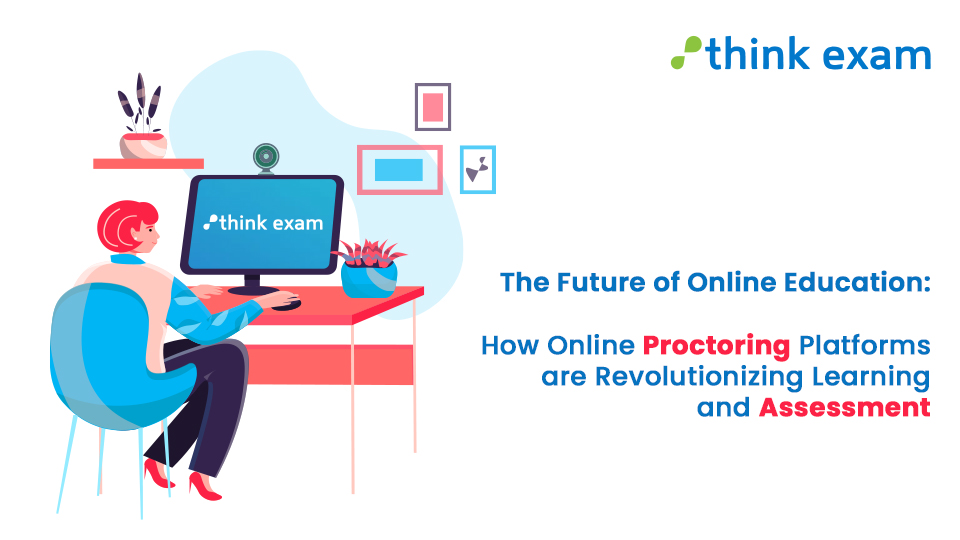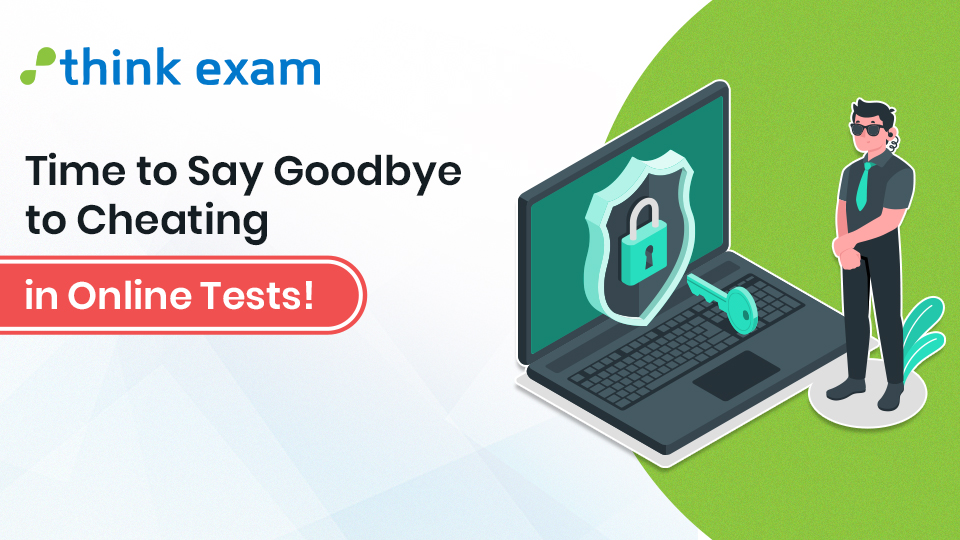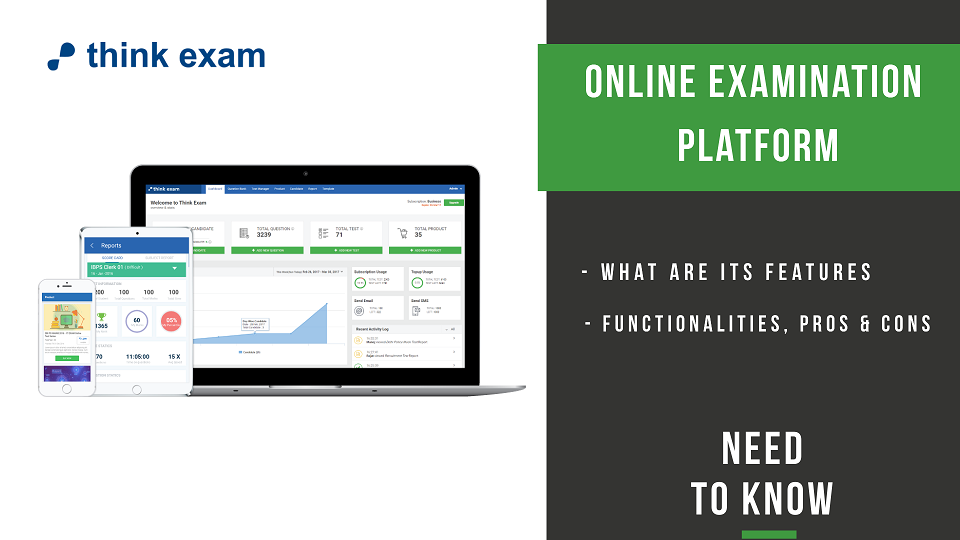Online education has seen a significant increase in popularity in recent years. However, the shift to online education has also brought about new challenges, particularly in ensuring the integrity and authenticity of online exams. This is where online proctoring comes in. Online proctoring aims at preventing cheating and maintaining the integrity of the assessment process. This article will explore the future of online education, focusing on how Think Exam’s online proctoring platforms are shaping the way we teach and learn and the impact they are having on the field of education.
What is Remote Proctoring?
The practice of monitoring online assessments remotely from any location in order to prevent cheating and maintain integrity in the assessment process is referred to as remote proctoring. This can be accomplished through the use of human proctors who have experience in this field, artificial intelligence algorithms, or a combination of both. By implementing remote proctoring, the goal is to ensure that the examination process is fair and free from any instances of aberrant behaviour.
Unique Cheating Methods in Online Education
As online education is becoming the preferred mode of education across the globe, students have found new ways to cheat during online assessments. Ten ways students may cheat during online assessments include:
- Impersonating someone before the exam
- Impersonating someone during the exam
- Sharing or mirroring their screen
- Using advanced technology such as microphones
- Using mobile phones
- Misusing the internet
- Storing answers on external devices
- Having family or friends present during the exam
- Logging out of the test window on purpose
- Assisting or facilitating cheating in any way.
The Process of a Proctored Assessment
Online proctoring involves oversight from both the proctor and the test-taker. While the proctor is responsible for monitoring the examination, the test-taker must also adhere to the guidelines set forth to ensure integrity. However, it’s important to note that proctors have a limitation on how many candidates they can monitor simultaneously, with the typical range being between 10 and 15 individuals. Let’s examine the process of a proctored assessment on Think Exam’s platforms from start to finish.
Step 1: Authentication of Test-Taker
The very first step in our proctored exams is the authentication of the test-taker. In simpler terms, the first step involves confirming that the person taking the exam is the one who they claim to say they are. The candidate is required to submit the Aadhaar card, IP, and OTPs to confirm identity. The information on the Aadhaar card is used for the facial recognition of the candidate.
Step 2: The Assessments Begin
If the candidate’s identity is verified in the first step, only then can they proceed to actually take the assessment. Once the identity of the candidate is approved by the remote proctor or our system, the screen opens for the assessment. If the identity verification fails, the candidate will have to redo the first step.
Step 3: The Monitoring Begins
Once the online assessment begins, the web cameras of the device are enabled to record audio and video. Other monitoring features like disabling of copy and paste option, navigation check, candidate blocking, real-time cheat alerts, “end test” option, screen sharing, live chat, etc., are also enabled. These features can also help physical proctors guide students during the assessment process.
Step 4: AL and ML Features are Activated
Data is captured in real-time and analysed by AI to detect any suspicious activities. Such data includes a variety of data, including keystroke dynamics, mouse movement, and facial expressions, etc. This not only prevents any attempts to cheat but also prevents any attempts of hacking.
Step 5: Report is Generated
Once the assessment is complete, our remote proctoring platform generates a report using the data captured during the assessment. The report includes information like the student’s response time, the number of times the student paused the exam, and the number of times the student navigated away from the exam. The reports can also include video and audio recordings of the student’s exam session, which can be used for further analysis. Such data helps track the student’s performance over time, identify areas of improvement, and to provide personalized support.
Benefits of Remote Proctoring
Online proctoring is a crucial tool for assessing knowledge and skills in a variety of settings, from educational institutions to workplaces. These exams are monitored by a proctor, who ensures that the exam is taken fairly and in accordance with the rules. There are various benefits of proctored exams for different groups, such as students, teachers, organizations, and employers. The following will explore these benefits in more detail.
-
Benefits for Students
It allows students to take exams from the comfort of their own homes, eliminating the need to travel to a physical testing location. This can save students time and money, as they no longer need to spend money on transportation or accommodation or take time off work or other commitments to travel to a testing centre. Additionally, with remote proctoring, students can take the exam at a time and place that is convenient for them. Furthermore, remote proctoring can also help to reduce stress and anxiety for students, as it eliminates the need to travel to an unfamiliar testing location and face the added pressure of being in a new environment.
-
Benefits for Teachers
Our proctored exams provide several benefits for teachers, like deterring cheating by providing a secure and monitored testing environment, streamlining the online assessment process by allowing teachers to administer and grade exams more efficiently, providing a more accurate assessment of learning through detailed reports, greater flexibility as they can be administered at any time and place, providing valuable feedback about students’ understanding of the material, and providing a record of student performance that can be used to evaluate student progress, determine grades, and inform decisions about student placement and higher education.
-
Benefits for Educational Institutions
Remote proctoring helps educational institutions save costs and resources by eliminating the need for proctors to be physically present during exams. It allows for a larger number of exams to be administered simultaneously, which can save institutions time and money. Additionally, it eliminates the need for a physical testing location, which again saves time. The anti-cheating features of online proctoring reduce administrative efforts involved in ensuring the integrity of online assessments. Furthermore, it provides detailed feedback about student performance and shows educational institutions exactly how to tailor instructions so that their students perform well in examinations. The better the scores, the better the reputation.
Contact our team at Think Exam to find out more about our remote proctoring abilities.




